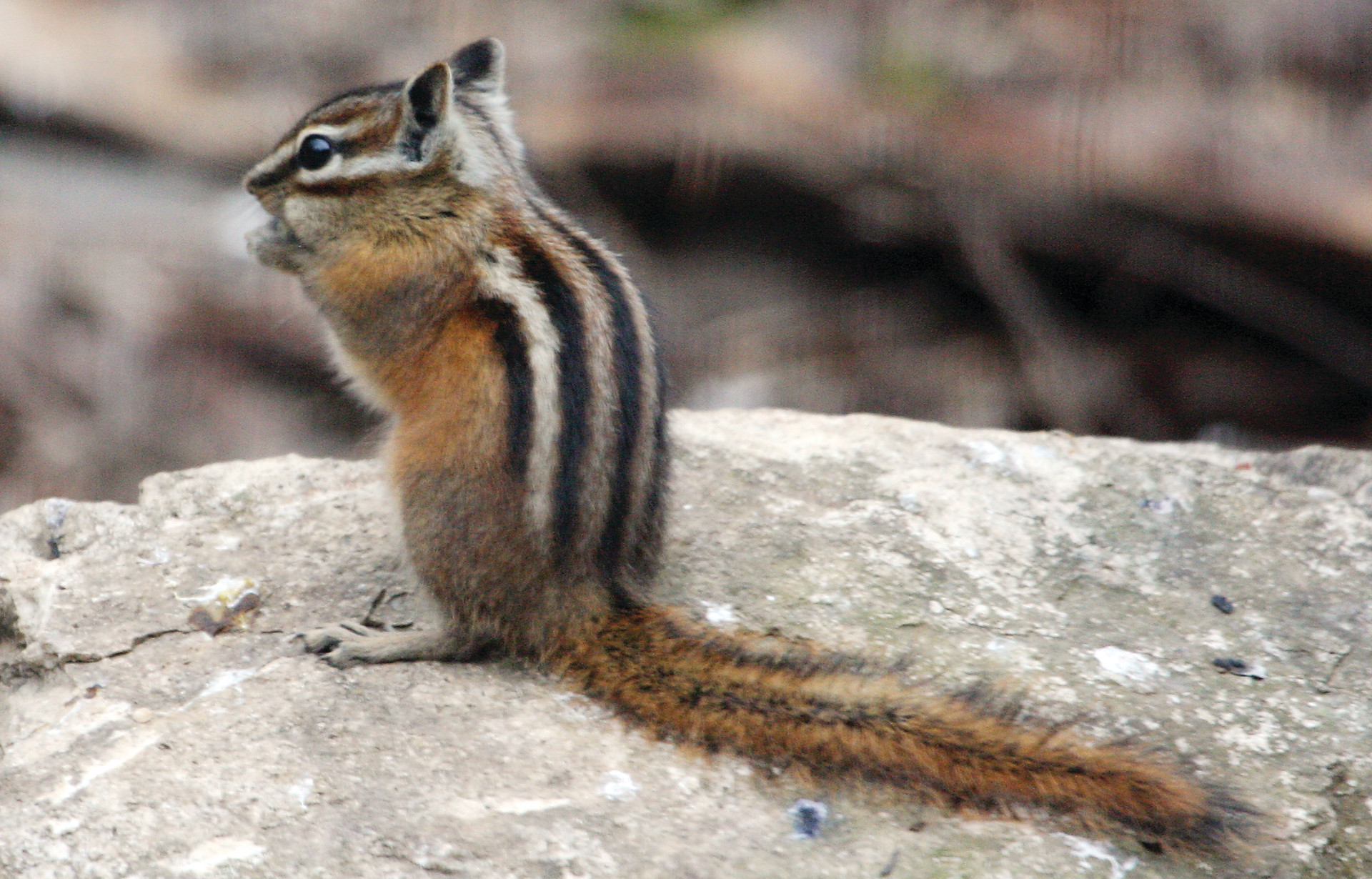Support the Timberjay by making a donation.
It’s all hustle and bustle
Spring is a busy time for both of the area’s species of chipmunk
It’s the busy season for chipmunks in the North Country. With our early spring, the chipmunks have been out and about for the past couple weeks, and that means they’re restocking their pantries …
This item is available in full to subscribers.
Attention subscribers
To continue reading, you will need to either log in to your subscriber account, or purchase a new subscription.
If you are a current print subscriber, you can set up a free website account and connect your subscription to it by clicking here.
If you are a digital subscriber with an active, online-only subscription then you already have an account here. Just reset your password if you've not yet logged in to your account on this new site.
Otherwise, click here to view your options for subscribing.
Please log in to continue |
It’s all hustle and bustle
Spring is a busy time for both of the area’s species of chipmunk
It’s the busy season for chipmunks in the North Country. With our early spring, the chipmunks have been out and about for the past couple weeks, and that means they’re restocking their pantries and looking for love all at the same time.
It’s been nothing but hustle and bustle for the chippies in our yard, who spend much of the day stuffing their cheeks with the cracked corn I toss on the ground for the birds, then making a beeline for their closest food cache.
Somewhere along the line, they’re making time for mating, although they seem to do all that with a modicum of decorum, unlike the red squirrels that seem content to “do the deed” just about anywhere and everywhere (including on our front porch), all while making ridiculous amounts of noise. They’re obviously having a good time of it!
While chipmunks are common across North America, in most of the eastern two-thirds of the U.S., there is just a single species, known as the eastern chipmunk. Out west, you’ll find more than a dozen different species, but east of the Great Plains, there’s just the one species, with a single exception. The least chipmunk is found only in northeastern Minnesota, northern Wisconsin and the U.P of Michigan, and these are the only areas in the U.S. where the ranges of these two species overlap.
In our yard, we have both species, although the abundance of each varies from year-to-year. This year, it seems to be running about 50-50.
Telling them apart isn’t too difficult, once you know what to look for. The biggest clue is size. Least chipmunks are tiny—some of them seem barely bigger than a good-sized deer mouse, although their long tail adds to their length. Some people probably assume these are juvenile eastern chipmunks, but that’s not the case. By the time we spot a chipmunk out in the open, it’s almost certainly full-sized.
The stripes provide another clue. They seem more pronounced on the least chipmunk (particularly on the face) and their back stripes extend all the way to their tail. That’s typically not the case with the eastern species. I’ve also noticed that their tails seem exceptionally long for their body size, at least compared to the eastern chipmunk. Finally, the least appears more chestnut on the sides, while eastern chipmunks often appear to be more gray.
We’re at close to the northern limit of the range for the eastern chipmunk, while the least chipmunk can be found all the way to Hudson Bay and northwest to the Yukon. But while its definitely seen as a boreal species in our part of North America, in the western U.S., the least chipmunk can also be found in a wide range of habitats, even desert scrub. For the most part, it appears this species is adapted to habitats with relative food scarcity, where competition with other, larger chipmunks is limited.
The range of the eastern chipmunk fairly well coincides with the eastern deciduous forest, where an abundance of nut-bearing trees, particularly oaks, provide them with a ready food supply conducive to long-term storage.
Both species store food for the winter rather than put on big fat reserves as do some other mammals, like bears. Chipmunks aren’t true hibernators. They enter a kind of torpor for long periods, but they do wake periodically throughout the winter to eat from their winter cache.
Once spring arrives, it’s time to replenish their food supplies and start working on the next generation. Least chipmunks raise just one litter a year, which is typical for a species adapted to poorer quality habitat, while eastern chipmunks often raise two litters a season, one in early spring and a second in early-to-mid summer.
Both species live and raise their young in elaborate burrows, with multiple rooms for different purposes and multiple entrances and exits. The least chipmunks, in particular, seem to like areas of broken or fractured rock or areas of large cobble (both of which are common in our area), which provide lots of underground spaces to hide and which are tough for a potential predator to dig up.









